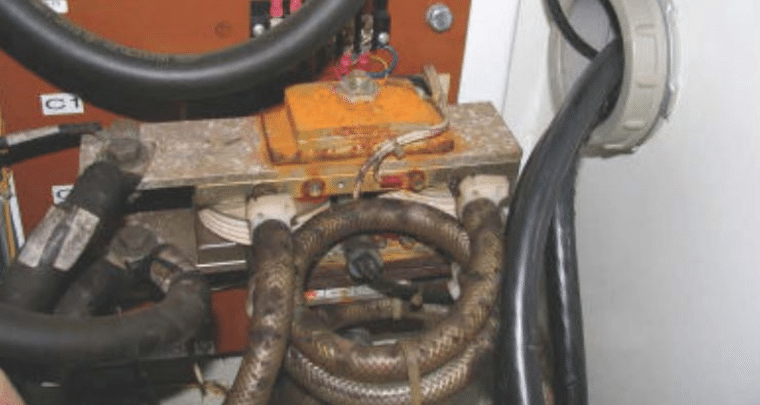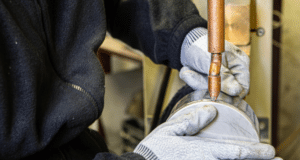Condensation Kills Resistance Welders: Case Study
Condensation on a cold glass of Coke is a good thing, but internal condensation caused by cooling your resistance welder with water chilled to a temperature below the prevailing Dew Point can cause serious damage to the welder’s transformer and control.
Case History
During an August heat wave, a customer called late on a Friday afternoon with a crisis.
The only machine in his plant capable of resistance welding fusites to refrigeration compressor shells had “blown up” and his entire production line was down.
After much discussion, we recommended that the machine be disconnected and trucked to our shop for repairs. A rigger was hired, the machine was delivered in a matter of hours, and we worked into the night to determine the problem. Tests showed a shorted welding transformer, so it was removed for repairs.
Our transformer shop worked through the weekend and found the internal windings of the water cooled transformer thoroughly soaked with moisture, which caused insulation in one of the coils to break down and short out. This condensation problem had obviously been going on for some time.
Also, the SCRs in the contactor cabinet had been “sweating” for so long that they were orange with rust. In addition, the cooling water hoses connected to the SCRs were moldy due to so much moisture in the electrical enclosure.
It took the better part of a week before the machine was repaired and put back in service. And, although the charges to remove, transport, repair and reinstall the machine were substantial, that expense paled in comparison to the $80,000.00 in lost production for the week.
Cause
A service call to the customer’s plant determined the root cause of the problem. We found the welder connected to a water chiller used for another machine that required 50°F water, which is well below the prevailing mid-August Dew Point, typically in the low to mid 80s°F. This caused the welder and weld control to sweat, which eventually led to the blow-up.
Solution
We sold the customer a separate chiller to use exclusively with the welder. Also, we taught them to keep the temperature set above the prevailing Dew Point, which will prevent condensation.





